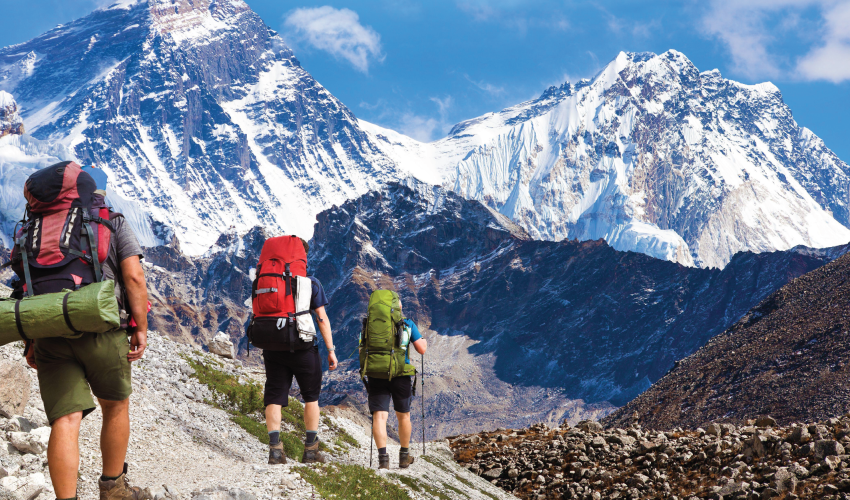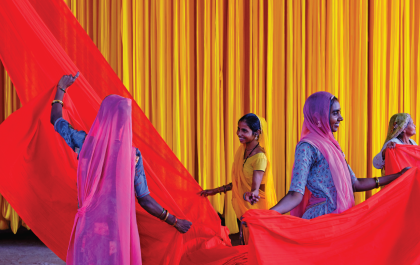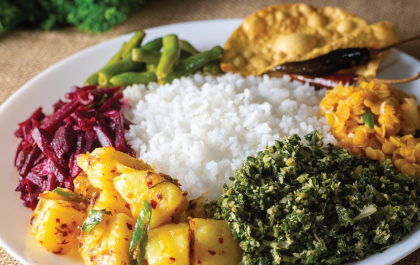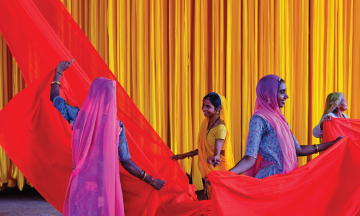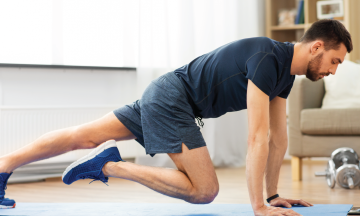To escape the scorching heat of the Indian summer, push yourselves out of your comfort zone by going on a trek
By Ravi Raj
Blistering heat, brutal heatwaves, and extreme temperatures—the Indian summer, besides the usual fun and frolic, can be harsh and unforgiving too. If you are looking for an adventurous escape from the hustle and bustle of urban life, mountains are a perfect gateway—and the country is blessed with some of the loftiest peaks in the world. Summer is also the best time to appreciate the gallant mountains in all their glory. As the snow melts on the upper range, the pristine, snow-clad trails morph into a lush green landscape, brimming with sprightly wildflowers and scenic lakes. To experience the wilderness, what’s better than trekking your way up through the rugged terrains, delightfully green terrains, and possibly the frozen landscapes?
Is Trekking For Everyone?
Attuned to life within the confines of the four walls of the home and your oce, it’s only obvious to feel a sense of discomfort at the very thought of spending days ascending to the rocky terrain of the mountains. Yet, it’s not as challenging as you might think. You don’t have to be an expert mountaineer; you should be just fit enough to walk several miles on foot. “For your first trek, it’s better to start with the route whose difficulty rating is easy to moderate,” says Abhishek Singh, a 25-year-old seafarer and a seasoned Himalayan trekker. “If you don’t have any health conditions or lead a sedentary lifestyle, a basic fitness routine is enough to see you through the summit,” he adds.
There’s no dearth of treks, and you can choose what’s best for you depending on your fitness level. From the verdant hills of Sahyadris in the west to the majestic Himalayas in the north, there’s something for everyone’s taste. While the Western Ghats in Maharashtra are ideal for a weekend gateway, for a longer escape, you may head to the trails ensconced in the Himalayan range of Himachal Pradesh and Uttarakhand.
Prepping For A Trek
Physical preparation is the most vital part if you’re gearing up for a trek. There’s nothing worse than starting off the trek but being unable to go all the way to the summit because your body catches up. You don’t need an extremely stringent fitness routine unless you are planning to scale one of the eight-thousanders. “Many people just overestimate the difficulty of trek and underestimate their capability. If you can walk 3-4km in twenty minutes, you can even go for the moderately difficult treks like Hampta Pass,” says Sourav Jain, who manages the trekking operation for adventure travel operator. But trekking is not just about physical fitness; you also need to be in the right mindset throughout the trek. “One should always be prepared for fickle weather, challenging ascends, kneebreaking descends, and sometimes scorching sun too,” says Vikash Singh, the Himalayan trek guide. “If you are in a group, you shouldn’t feel bad if your pace is slower than the others. It’s important to listen to your body, and not shy away from taking intermittent breaks when needed,” he adds.
If you’re planning for a high-altitude trek, acclimatisation becomes crucial, and it’s better to spend some time in a nearby village or the camp, for it helps your body to adjust to what awaits in the upcoming days: decreased oxygen level and altitude sickness.
Trekking Essentials
Hiking Boots: No, your jogging shoes won’t see you through the bumpy terrains and steep ascents. Strong and sturdy hiking boots with great ankle support and excellent grip are must-haves. “Since the weather changes in the blink of an eye at higher altitudes, always ensure that the shoes are waterproof,” advises Vikas. The shoes should fit you properly.
Say No to Cotton: Cotton is the worst fabric to wear on your hiking trip. It absorbs moisture and doesn’t dry quickly. Since you’ll perspire a lot during trekking, you should go for clothing that is breathable, lightweight, and quick-drying.
Windproof Jacket: On high altitudes, nights are scarily chilly, but daytime is not safe either. A windproof jacket with great padding is non-negotiable. Not only will it protect you from cold, but also from rain and snow.
Sunglasses: On sunny days, the sun will be extremely harsh at such elevations. “A reliable pair of sunglasses is a must, since it protects your eyes from the harmful UV rays,” says Jain.
Reproduced with permission from Mansworldindia.com




